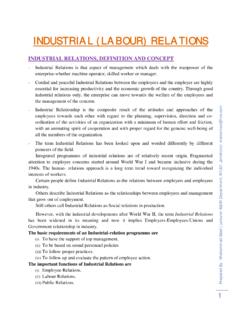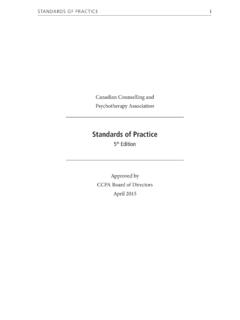Transcription of Gay and Lesbian Adoptive Parents ... - Child Welfare
1 National Clearinghouse on Child Abuse and Neglect Information National Adoption Information Clearinghouse Gateways to Information: Protecting Children and Strengthening Families Gay and Lesbian Adoptive Parents : Resources for Professionals and Parents IntroductionGay men and lesbians have always adopted, though in the past they usually hid their sexual orientation. Today, just as they are becoming visible in all other aspects of society, they are being considered more seriously as potential Adoptive Parents . This change has been aided by the increase in the number of gay and Lesbian biological Parents in the United States. In 1976, there were an estimated 300,000 to 500,000 gay and Lesbian biological Parents ; as of 1990, an estimated 6 to 14 million children have a gay or Lesbian And, between 8 and 10 million children are being raised in gay and Lesbian The US Department of Health and Human Services, Adoption and Foster Care Analysis Reporting System (AFCARS), estimated in 1999 there were approximately 547,000 children in foster care in the United States, of which 117,000 are legally free and therefore eligible for adoption.
2 But, in 1997, there were qualified Adoptive families (including single Parents ) available for only twenty percent of these children. It is also estimated that approximately ten percent of the population or 25 million individuals are on these increasing numbers, can gay and Lesbian individuals be realistically and automatically excluded from consideration as potential Adoptive Parents ? Despite this increase in gay and Lesbian parenting, social workers may have reservations when considering gay Adoptive Parents for a Child . They might wonder how the children will be raised and how they will feel about themselves and their Parents . Will they be embarrassed because they have two mothers or two fathers, or because their single mother dates women or their unmarried father has a boyfriend? Will their friends tease them? Will they be more likely to be homosexual than will children raised by heterosexual Parents ? And most important, how will having been raised by gay or Lesbian Parents affect them as they grow into adulthood?
3 This fact sheet addresses the issues faced both by social workers evaluating prospective gay or Lesbian Adoptive Parents and by gays and lesbians considering adoption. An extensive list of sources of support and information that may be helpful to gay and Lesbian Adoptive Parents and adoption professionals is available online at , or by contacting the Clearinghouse at or (888) 251-0075. National Adoption Information Clearinghouse 330 C St., SW Washington, DC 20447 (888) 251-0075 or (703) 352-3488 The Clearinghouses are services of The Children s Bureau Administration for Children and Families Department of Health and Human Services Gay and Lesbian Adoptive Parents : Resources for Professionals and Parents April 2000 2 This material may be freely reproduced and distributed. However, when doing so, please credit the National Adoption Information Clearinghouse. Available online at The Statusof Gay andLesbianParentingDefining the family structure of gay and Lesbian Parents can be a challenging task.
4 The most common type of homosexual household is step or blended families. These are gay and Lesbian Parents who had their biological children in a former heterosexual relationship, then came out, and created a new family with another partner. Other types of family structures include single gay or Lesbian Parents and couples having children together. Both of these family types may be created through adoption, but more frequently reproductive technology is being has been some research on biological families with gay and Lesbian Parents . This research focuses mainly on children born to donor-inseminated lesbians or those raised by a parent, once married, who is now living a gay lifestyle. While research on these situations has not addressed all the issues relevant to Adoptive parenting; this information is invaluable for social workers struggling with difficult decisions, for gay men and lesbians who want to be Parents , for their families and friends, and for anyone seeking information on this nontraditional type of family.
5 Unfortunately, the effects on children of being raised by Lesbian and gay Adoptive Parents cannot be predicted. The number of homosexuals who have adopted is unknown, and because of the controversial nature of the issue, their children are often reluctant to speak out. Testimony of children who have grown up in gay households may turn out to provide the best information about the results of gay parenting. Research studies, often conducted by individuals or organizations with a vested interest in the outcome, are contradictory. Studies linked to conservative political and religious groups show negative effects on children of gay and Lesbian Parents ; while, studies which support homosexual parenting are said to reflect the bias of those who are themselves gay or who support gay rights. Clearly, what are needed are definitive studies that would follow larger numbers of children over a long period of time. That research, when completed, will provide more definitive information for the debate.
6 In the meantime, it is critical to address the issues and concerns so that social workers can examine their own personal biases to make informed decisions and gay and Lesbian Adoptive families can receive the support they need to thrive. Issues andConcerns What is sexual orientation? The American Psychological Association defines sexual orientation as one of four components of sexuality and is distinguished by an enduring emotional, romantic, sexual or affectionate attraction to individuals of a particular gender. The three other components of sexuality are biological sex, gender identity (the psychological sense of being male or female) and social sex role (the adherence to cultural norms for feminine or masculine behaviors). 5 For most people sexual orientation emerges in early adolescence without any prior sexual experience. Sexual orientation is different from sexual behavior because it refers to innate feelings and self-concept and may not be expressed in behavior.
7 Understanding the source of sexual orientation depends on which side of the nature versus nurture debate you fall. Some theories point to genetic or inborn hormonal factors; others to early Gay and Lesbian Adoptive Parents : Resources for Professionals and Parents April 2000 3 This material may be freely reproduced and distributed. However, when doing so, please credit the National Adoption Information Clearinghouse. Available online at childhood life experiences. Many believe sexual orientation is shaped at an early age through a combination of biological, psychological and social Children will be molested by homosexual Parents . There is no legitimate scientific research connecting homosexuality and pedophilia. Sexual orientation (homosexual or heterosexual) is defined as an adult attraction to other adults. Pedophilia is defined as an adult sexual attraction or perversion to In a study of 269 cases of Child sex abuse, only two offenders where found to be gay or Lesbian .
8 More relevant was the finding that of the cases involving molestation of a boy by a man, seventy-four percent of the men were or had been in a heterosexual relationship with the boy's mother or another female relative. The conclusion was found that a Child 's risk of being molested by his or her relative's heterosexual partner is over one hundred times greater than by someone who might be identifiable as being homosexual. 8 Children will be teased and harassed. Children of gay men and lesbians are vulnerable to teasing and harassment, particularly as they approach adolescence, when any sign of difference is grounds for exclusion. How much of a problem is it? Is it likely to cause lasting psychological damage? Gay and Lesbian Parents are well aware of the difficulties that a Child may face many have dealt with prejudice all of their lives. Most see it as an opportunity for ongoing discussion that will help their children grow as people. Abby Ruder, a therapist, Lesbian , and Adoptive mother, acknowledges that children will be teased, and takes great pains to prepare her gay and Lesbian clients for some of the problems that their children will face.
9 She feels that families should have a plan for dealing with society's attitude toward them. Children with gay or Lesbian Parents need to be taught when it's okay to tell people and when not to. A family doesn't have to be 'out' all of the time. My 9-year-old .. has become very adept at knowing when to tell people that she has two mommies. Wendell Ricketts and Roberta Achtenberg, in the article Adoption and Foster Parenting for Lesbians and Gay Men: Creating New Traditions in Family from Homosexuality and Family Relations, address social workers grappling with the issue by asking, ..should children be sheltered from every experience in which their difference might challenge prejudice, ignorance, or the status quo (or in which they would be 'exposed' to the difference of others)? Agencies conforming to such a standard must ask themselves whether it is their function to honor the system that generates stigma by upholding its constraints. They continue, Teasing is what children do.
10 Does this mean that Child Welfare policy must be set at a level no higher than the social interactions of children? In custody cases involving a gay or Lesbian parent, courts have considered the fact that a Child might be teased as contrary to the best interests of the Child . They argue that the stigma attached to having a gay or Lesbian parent will damage a Child 's self-esteem. This has been refuted in many studies. Research has found that although children of gays and lesbians do report experiencing teasing because of their parent(s), their self-esteem levels are no lower than those of children of heterosexual and Lesbian Adoptive Parents : Resources for Professionals and Parents April 2000 4 This material may be freely reproduced and distributed. However, when doing so, please credit the National Adoption Information Clearinghouse. Available online at In 1984 the Supreme Court heard a case, Palmore v Sidoti, in which a Florida man sought custody of his daughter on the grounds that his white ex-wife was now married to a black man and that this would expose his daughter to the stigma of living in an interracial family.
















